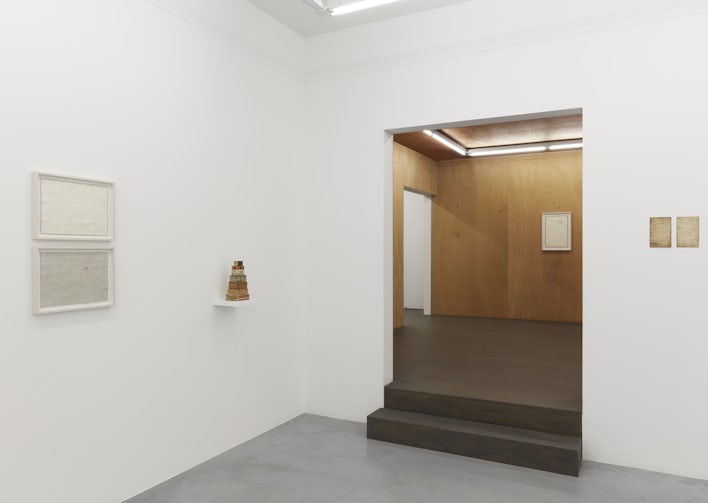
10.11 - 21.12.2019
For the drawings Fabrice Souvereyns (°1995 B) uses numerous recurring starting points. He opts for Simili Japon paper of the same size as a medium. A pencil, eraser and cutter are his only tools. He is exceptionally creative with very few resources and the resulting ‘colour palette’. The pencil touches the paper with varying degrees of force, from hard to soft; the lines hover between fragile and deep indentations. Heavy grey tones vie for the upper hand with grey-white tones. He does not plan series in advance; every drawing is unique. Without a story or theme, he spontaneously investigates with flowing lines in an initial phase. An intense observation of plants, the sun, clouds, waves and textile patterns serves as a vague guideline. The work process quickly develops an unpredictable vitality of organic shapes, an interplay between surface and depth, or the utilisation of mistakes he has made. The serrated edges help determine the composition. Occasionally he uses collage and negative shapes. A rhythm evokes syncopation; he answers a previous intervention with a countermovement. Bright areas become dark and vice versa. The artist consciously deviates from obvious virtuosity. Sometimes he steps back. Fragments are erased or drawn over. Geometric shapes insert order into the loose lines. The focus areas change along the way; the subject transforms. As the work process evolves, he consciously steers the drawing in a particular direction. He remains the master of his artistic decisions.
The artist concentrates on one drawing at a time; he carefully lists the working hours on the back. The reverse side is a work of art in its own right, filled with traces of erasure and indentations. In the atelier, the artist’s imagination leads to self-invented shapes. Exploring his own consciousness gains the upper hand over the initial representation of visual reality. The concentrated process broadens his consciousness. Dream and creation make an appearance. Lines are placed closer together; manifestations take an abstract turn. This makes his art look simultaneously universal and original. The pieces appeal directly to the viewer’s experiences. We harbour certain feelings for them, but the artist does not serve up any explicit points of views or personal feelings. He consciously avoids ostentatious accents. Conversely, his vegetative shapes are filled with hidden eyes. Are they looking at the drawing, the viewer or the world? Or was the artist looking at something else during the work process? In any case, we look at drawings that are result of intense observation of both the outside world and the reality of consciousness.
Filip Luyckx
2016-2017
Master of Arts, Drawing, LUCA School of Arts Ghent
2013-2016
Bachelor of Arts, Drawing, LUCA School of Arts Ghent
2011-2013
Visual Arts, School of Arts, Ghenk, B